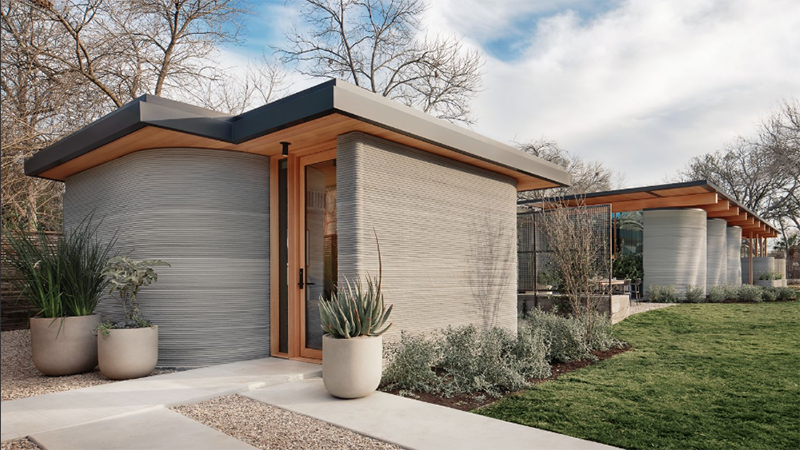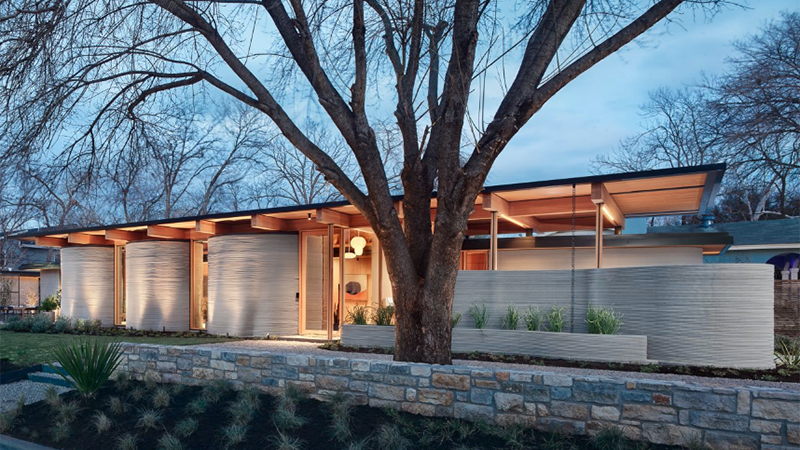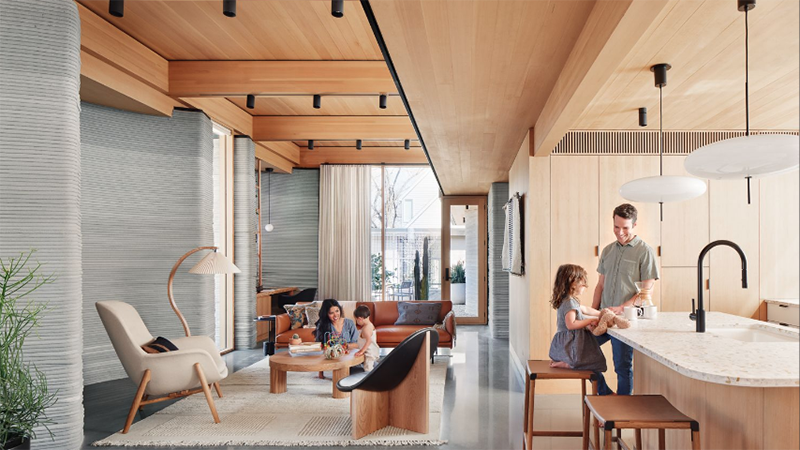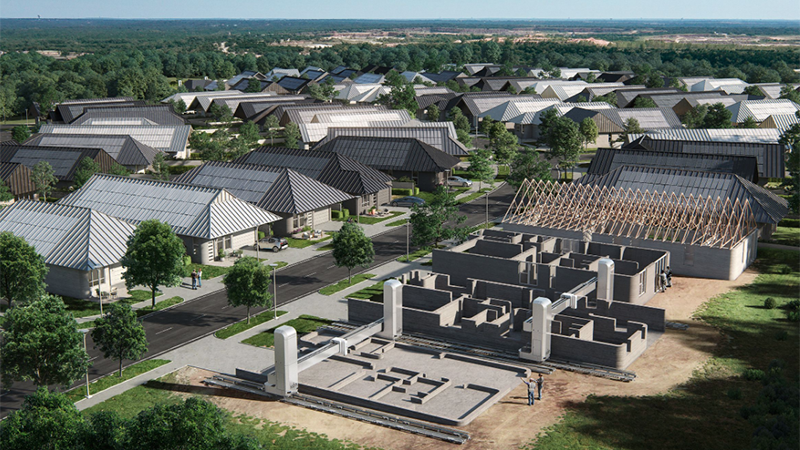3D printed homes cementing the future of construction
3D printing of homes is becoming more viable around the world, and as a raft of issues hammer the traditional construction industry model the allure of an entirely new way of building homes continues to grow.
In 2018, one of the first 3D printed houses in Austin, Texas, USA, took just 27 hours to build.
The project was not the first construction of its kind in the world but does represent an important turning point where additive manufacturing in construction first gained government permission for the structure to be lived in.
Since then, the 3D printing construction technology company, ICON, has developed two multi-building communities in Texas and Mexico, to address acute homelessness and extreme poverty.
It joins a wave of companies taking additive manufacturing in construction technology and materials to the open market, including Wasp, Cobod, Winsun, Killa Designs and many more across Europe, Asia, the United States, and now Australia.

Ahmed Mahil, CEO, Luyten
They have one unifying purpose: to intentionally shift the paradigm of homebuilding in what is touted as the fourth industrial revolution in construction experiments to have quickly evolved into commerce.
Additive manufacturing in construction is emerging as a solution to global problems from which Australia is not immune; labour shortages, rising inflation, cost blow outs, extended build times, material supply chain issues and high-end product costs.
Plus, the shift to sustainable and environmentally friendly construction aligns with the benefits of additive manufacturing which are impossible to ignore.
The viability of the 3D construction industry is supported by ICON building 100 3D printed homes in an estate that corporate home builder Lennar is poised to sell. Lennar is a major player in the US real estate market making $8 billion in the June quarter and would appear to be an endorsement of the new building method.
Melbourne-based CEO and founder of Australian company Luyten 3D, Ahmed Mahil, told Australian Property Investor Magazine that “3D printing concrete is not a trend, it’s here to stay.”
Luyten 3D designs and manufactures custom large-scale three-dimensional concrete printers for the construction industry, has partnered with the Northern Territory First Nations people to build 3D printed houses and has won a contract to supply their printing to build affordable homes in the Philippines.
“We’re seeing an incremental acceptance and awareness of this, particularly with construction products,” he said.
“I think government and stakeholders are watching very closely and have figured out this is not going to be a trend, this is going to be the new method of how we do things,” he said.
3D trials in NSW
Global leader in 3D printed and robotics constructed buildings, Danish company COBOD International, announced in June this year it had entered into a distribution agreement with Melbourne-based company, Fortex.
Fortex Chief Executive Officer David Lederer describes the partnership as a foundation for a new construction paradigm in Australia.
“The first COBOD printer in Australia will allow us to build better homes faster, providing improved outcomes for building companies and consumers alike,” he said.
Luyten 3D is already working with a construction company in Dubbo, New South Wales, after Dubbo Regional Council (DRC) councillors resolved in May this year to assign four of its residential blocks for a trial of 3D printed housing stock.
A DRC CEO’s report is scheduled for September which should see an outline of any regulatory issues associated with 3D printed housing in NSW, and Australia, along with a framework of legislative requirements of a 3D printed house trial.
“We met with the council and they were checking the normal compliances but we have discussed them how 3D printing actually exceeds the code of building in an order of magnitude,” Mr Mahil said.
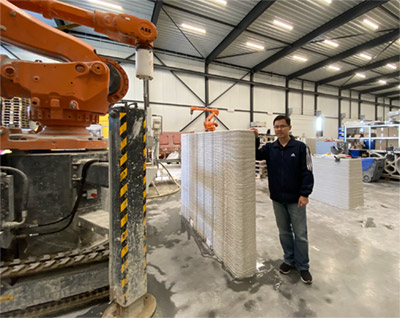
RMIT University Civil and Infrastructure Engineering Advanced Manufacturing Precinct senior lecturer Dr Phuong Jonathan Tran
RMIT University Civil and Infrastructure Engineering Advanced Manufacturing Precinct senior lecturer Dr Phuong Jonathan Tran says the regulation and design codes are important to follow, but as he is a part of the committee for 3D printing design codes to align with American and European standards, he hopes they won’t be a barrier in Australia for progress.
“Thirty years ago people were printing small things in labs.
“Everyone had the same doubts then as they do about it right now.
“There were lots of negative comments but you can see these days, 3D printing has already made it to space and into a range of other industries,” Dr Tran said.
“The hurdle is just starting; to get the ball rolling and to build something so people can see it, like the real constructions in the US and Europe, then you can see more engagement or interest from industry and that’s what builds momentum but I don’t think that’s a reason why we should not limit ourselves because there is no design code yet,” Dr Tran said.
“We have to build and on top of that we need to do research.”
Printing their own script
In 2020, the Centre for Sustainability and Innovation in construction in Belgium built a test case, two-storey, eight-metre tall 3D printed house.
Built in conjunction with Belgian company Kamp C, project manager Emiel Ascione said it was a design breakthrough with international ramifications.
“Other houses that are printed around the world only have one floor and in many cases the components were printed in a factory and assembled on-site.
“We, however, printed the entire building envelope in one piece, on-site.”
President of Kamp C Kathleen Helsen has seen an uptick in 3D printing in construction around the world at a time when the traditional building industry is facing unprecedented challenges.
“We must reduce our consumption of materials and energy, reduce CO2 emissions and the waste stream, the demand for high-quality and affordable housing is on the rise, and so on.
“At Kamp C, we believe new technologies, such as 3D concrete printing, can help provide a response, which is why we created this unique location on our site, where construction companies can experiment with 3D printing, together with research and education institutions.”
To the moon and beyond
In Australia, Dr Tran agreed.
“We’re always looking for collaboration with industry,” he said.
“Another mission of the university is pushing boundaries, for example, when we talk about printing on the moon and Mars, it’s actually easier to say than do because you have to understand the materials.
“I’m working on developing the materials for construction on the moon.
“The construction technique using 3D printing these days is not suitable because the moon doesn’t have water or sand - we only have certain types of very fine dust from volcanoes on the moon surface.
“To understand the material always has to start with research,” Dr Tran said.
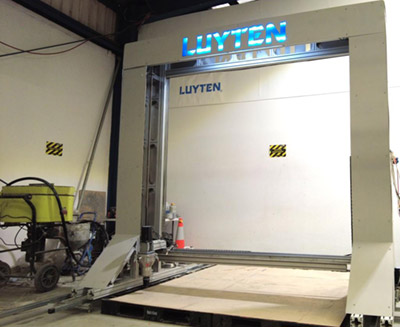
Luyten 3D printer
Luyten 3D has also set its sights high, signing a memorandum of understanding in 2021 with UNSW to begin researching and developing a specialised 3D printer, named Platypus Galacticas, capable of building on the moon.
For Michael Boss of Melbourne business Boss Products, which specialises in producing street furniture for parks and public outdoor spaces, planter boxes for commercial settings and retaining walls for domestic and commercial use, the efficiencies 3D printing offers have prompted him to open a 3D printing factory using Luyten 3D technology.
“As labour, power and other operating costs were continuing to rise, we had to find another way,” Mr Boss said.
“We purchased their Platypus X2 3D printer that they customised for us - it is a large machine with extraordinary capacity that is extremely easy to use and incredibly versatile.”
“We have cut time, resources and costs up to 95 percent and we are now able to manufacture at a rate that is literally hundreds of times higher at a fraction of the cost.
“We are able to provide our clients with an unlimited number of designs and the flexibility to change the shape, size or attributes of the planter boxes at the touch of a button and using Luyten’s proprietary concrete mix, our planter boxes are six to eight times stronger than regular concrete.”
Work in progress
When it comes to 3D printed housing in Australia, Mr Boss takes a conservative view.
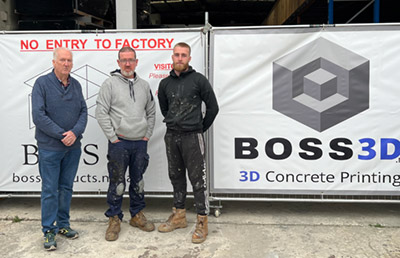
Boss Products three generation family business owners Trevor, Michael and Tom Boss
“That’s the holy grail, to turn up on site and print a house in a day or two.
“I think that’s years away.
“The approach we’re taking is to start small and build up.
“We’ll use the planter boxes as a vehicle to set up a factory in a very controlled environment and start producing concrete boxes to order, then retaining walls, fence panels then build up to where we’re printing a house, but it’s starting small.”
He said it was important to temper expectations.
“As much as I want to shout it from the rooftops about all we can do, you want to be realistic - for now, it’s about learning from the ground up.
“We did our research and our homework has paid off as our investment in 3D printing is already delivering significant returns,” Mr Boss said.
